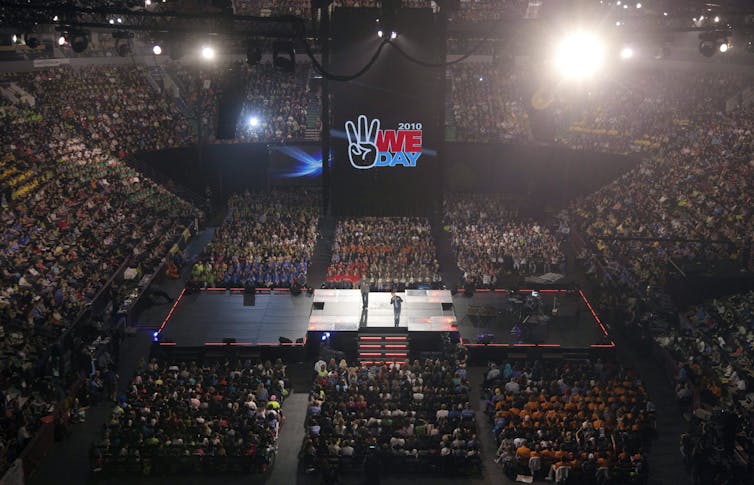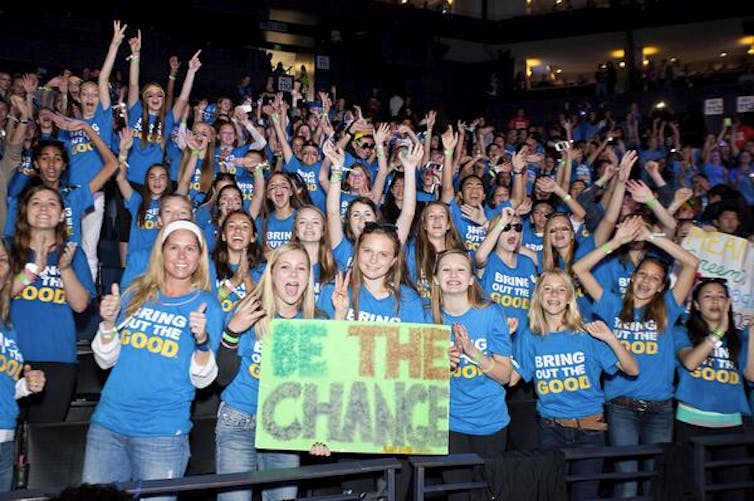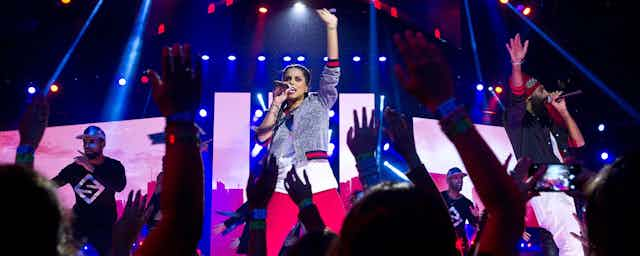The world is awash with massive inter-sectional social problems, from devastating hurricanes and tsunamis driven by climate change to the refugee crisis, racism and the rise of white nationalism.
We have a huge need for widespread social change. And this includes all of us changing the way we live if we’re going to truly address any of these issues.
Yet many of us seem content to simply continue on with our lives. We are either actively trying to maintain the status quo or pursuing our own self interests; and we are only able to see the world from our own perspectives.
How can we shake up ourselves and our neighbours in our everyday lives in order to get everyone involved in creating social change?
The rock concert for social change
Each autumn, tens of thousands of young people get ready to take part in We Day, a series of rock concerts and speaking events designed to inspire social change. This year, the event takes place in Toronto on Sept. 28, in Vancouver on Oct. 18, Ottawa on Nov. 15 and in many other locations across Canada, the U.S. and the U.K. throughout the school year.
Rock stars like Kelly Clarkson and Hedley will share the stage with celebrity activists like Mia Farrow and world political leaders such as former secretary-general of the United Nations Ban Ki-Moon.
Targeted at youth, We Day takes students out of their school environment with a goal to mobilize the audience as “change-makers.” The event is based on the idea that people want to do something meaningful with their lives. In the We Day philosophy, we all want to create change in the world – we just need a kickstart and to be taken out of our everyday lives, to be energized by 20,000 other people in a large stadium full of inspiring people and celebrities.

Such politically oriented concerts are nothing new. Benefit concerts like Live Aid date back to 1985. Live Aid was a dual concert held simultaneously in London and Philadelphia to bring attention (and money) to the Ethiopian famine.
Twenty years later, the 2005 Live 8 concert aimed to bring attention to continuing poverty in Africa and called on G8 leaders to eliminate debt and increase foreign aid to the continent. Since then, there have been many other large and small benefit concerts created around the world to raise awareness about various social issues.
However, media studies research on these types of events has been mixed. Some scholars found benefit concerts can indeed build compassion and raise awareness. Yet other researchers have argued these concerts actually reduce more critical discussions of power and do nothing but boost celebrity profiles.
Storytelling and empowerment
In our recently published research paper, we argue We Day was able to create a community of change-makers through two key elements that differentiate it from previous concerts.
First, personal narratives of injustice and action turned attention to the often invisible social arrangements that disadvantage particular groups. Importantly, these stories were told both by those with privilege who witnessed injustice and also by those who faced injustice themselves.
Those who were privileged urged the audience to follow them in fighting for change. And those who were marginalized, who faced injustice because of their race, disability or colonial history, told stories of how they overcame challenges to fight for change.
These stories allowed the audience to relate and contrast the stories with their own lives, leading to empathy instead of the pity and guilt that so often emerges in these situations. As a result, the personal narratives of injustice and action disembedded people from their everyday lives, challenging their ideas about social positions and the status quo.
Second, the event fully engaged the audience from an individual to collective empowering. That is, metaphors, analogies and physical embodiment were used to show the power of large groups to create social change, without losing sight of the important contribution of each individual.

Often, coming to understand the many large-scale systemic injustices in the world can be overwhelming, and individuals can feel like their own actions cannot make a difference. But at We Day, the importance of the individual and the collective together created an emotional energy geared towards social change.
As a result, the individual-collective empowering embedded people in a new community that supported their new-found understanding of injustice. Through the storytelling and empowering designed into We Day, the event was able to change audience members’ ideas about self and others, and to motivate them to work towards social change.
Events such as We Day literally create a separate space where people are positioned outside of the everyday and can see their world from others’ perspectives. When the audience returns to their everyday lives, they remain connected to the event, its organizers and other audience members who provide a community of support as they start to fight for social change.

